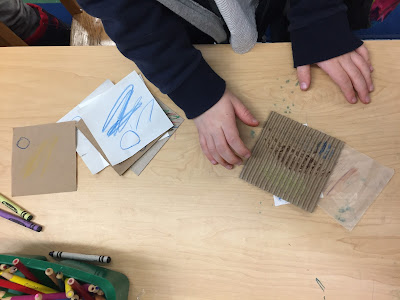Gangadhar Jogikalmath, Mira's dad (2-227) and an organic, polymer chemist, came to talk with the class last week! He has materials start up company in Boston that makes high performance fabrics.
Gangadahar started talking about all the different materials we come across in our lives....
Gangadahar uses polymers when making his fabrics. The fabrics can repel water or are fire retardant. We talked about why someone would want a fabric that doesn't get wet (swimsuit, raincoat, a t-shirt) or won't catch on fire (a fireman's clothes, our clothes, a blanket).
 |
The bottom right picture stumped many of us..they
are silkworm cocoons! |
 |
| Man made polymers come from... |
Polymers are derived from oil and fibers are made from them! We were excited to see that sand, silt and rock were part of the process! We just finished that unit! We got to touch nylon pellets and feel a reel of very thin fiber thread!
We had so many questions! Gangadhar talked about DNA. That was fascinating! The class wanted to know how many DNA strands were in so many things!
I was curious about when he knew he wanted to become a scientist. Gangadhar said he hadn't really thought about it, but remembered when "when I was in high school, I found a stack of old Scientific American magazines that intrigued me to no end. The stories of scientists and their inventions were fascinating." That was the earliest memory of when he wanted to become a scientist.
Thank you so much for coming to our science class Gangdhar!



















































